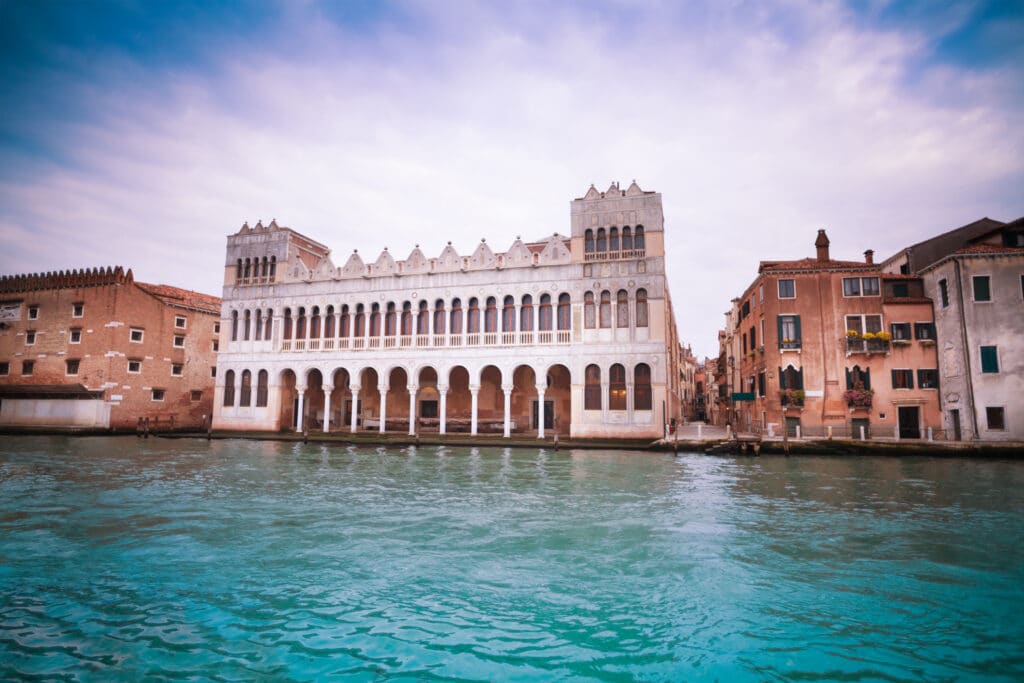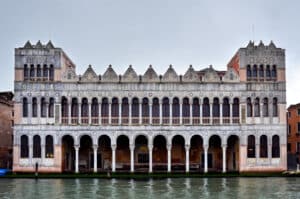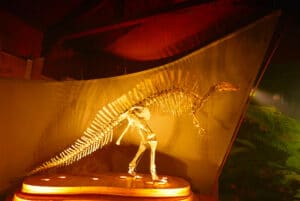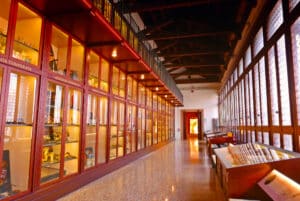
The Venice Natural History Museum (Museo di Storia Naturale di Venezia) has an admission fee of €10 for adults as of 2025. There are reduced tickets priced at €7.50 for children aged 6–14, students aged 15–25, and visitors over 65. Children 5 and under enter for free, making it a family-friendly stop. The museum’s hours vary by season: from June 1 to September 30 it is open 10:00–18:00 (last entry at 17:00), while from October 1 to May 31 it operates 09:00–17:00 (last entry at 16:00).
Note that the museum is closed on Mondays year-round. In addition, during the summer high season, there are special evening openings – every Friday and Saturday from May through September 2025 the museum stays open until 20:00 (with last admission at 19:00), giving visitors extra time to explore. We visited on June 24, 2025, and the information above was accurate as of that date.
Inside the Museum: History, Exhibits & Highlights

The historic Fontego dei Turchi palace, home to the Natural History Museum, faces the Grand Canal in Venice.
This striking palazzo, known as the Fontego dei Turchi, was originally built in the 13th century and has a long, fascinating history. Its architecture – with two levels of elegant arcaded loggias and small corner towers – reflects a mix of Venetian-Byzantine style and medieval design. Over the centuries, it served as a trading depot for merchants from the East (even hosting the city’s Turkish traders in the 17th–19th centuries) before eventually being repurposed as a museum. After extensive restorations in the 1800s and early 1900s, the building opened as the Natural History Museum in 1923. Today it houses around two million specimens spanning an astonishing 700 million years of natural history. (Venice as a whole is recognized as a UNESCO World Heritage Site for its cultural and historical significance, and this museum’s palatial home is very much a part of that heritage.) Walking into the grand hall, one immediately appreciates how historical ambiance meets scientific discovery here – a combination that makes this museum unique in Venice.

A star exhibit inside the museum: the 7-meter long skeleton of Ouranosaurus nigeriensis, a dinosaur discovered in the Sahara.
Ever wondered why a city famed for art and architecture would house dinosaur bones and ancient fossils?
Venice’s Natural History Museum answers that question in spectacular fashion. The journey begins in the atrium where enormous whale skeletons (from a blue whale and a sperm whale) hang suspended overhead, setting an awe-inspiring tone. Just beyond, a 5-meter-long aquarium showcases the vibrant marine life of the northern Adriatic Sea, including the local rocky reef ecosystems called tegnùe – it’s like peering into the Venetian Lagoon’s underwater world. On the upper floors, the museum unfolds in thematic sections. The first section, often called “Traces of Life,” is dedicated to paleontology and showcases fossils from myriad geological eras. Here you will encounter the museum’s most famous resident: a 7m(23-ft) long dinosaur skeleton of Ouranosaurus nigeriensis, discovered in 1973 by a Venetian explorer (Giancarlo Ligabue) in the Sahara Desert. Nearby, you can also see the fossilized skull and armor plates of a gigantic prehistoric crocodile (Sarcosuchus imperator) – a creature that lived 110 million years ago. Standing before these Jurassic giants, with dim lighting and subtle ambient sounds in the gallery, we felt transported into a primeval world. It’s an immersive experience; soft lighting and background audio create an almost surreal atmosphere that really sparks the imagination.

Venice Natural History Museum
The museum doesn’t stop at fossils – it also celebrates Venice’s tradition of exploration and scientific curiosity. One hall showcases ethnographic and natural specimens brought back by Venetian explorers of the 19th century, highlighting Venice’s great age of exploration. In this section, we found exotic artifacts and taxidermy from expeditions to Africa and beyond: ornate tribal objects, hunting trophies, and even a mummy from an 1850s Nile River exploration. (Indeed, there is a startling surprise – not only a human mummy with a gilded face on display, but also two mummified crocodiles from Egypt!)
These displays paint a vivid picture of how explorers and scientists of Venice collected wonders from around the world. Another section, intriguingly named “The Strategies of Life”, uses interactive exhibits, lighting, and sound to illustrate the amazing diversity of living organisms and how they adapt to survive. From vibrant cases of butterflies and beetles to models explaining how birds fly or how fish swim, the modern exhibits invite you to engage and learn. We were particularly impressed by the hands-on elements and multimedia – it made complex natural history concepts accessible and fun.
Is this museum only for kids? Certainly not – while children are delighted (we saw many little ones excitedly pointing out dinosaur eggs and colorful minerals), we found ourselves just as captivated by the rich content. The curators have definitely created an environment where both young and adult visitors can enjoy learning, which is perhaps why the museum feels so special. In a city overflowing with art galleries and churches, this museum offers a refreshing journey into science and nature, all within the walls of a Gothic palazzo.
Nearby Attractions and After-Visit Tips
After exploring the museum you might be curious about what else is nearby. Fortunately, this quiet corner of Venice’s Santa Croce district has a few hidden gems worth seeing. If you have a Venice Museum Pass, you’ll be pleased to know the Natural History Museum is part of it – we combined our visit with a trip to Ca’ Pesaro, another museum just a short walk away.
Ca’ Pesaro is an International Gallery of Modern Art housed in a Baroque palace on the Grand Canal, offering a change of perspective with its collection of paintings and sculptures. Also in the vicinity is the Palazzo Mocenigo Museum (focused on historical costumes and perfume), located near the Church of San Stae – it’s only about a 5-minute stroll from the Natural History Museum. For those interested in local culture, the famous Rialto Market isn’t far either: a 10–15 minute walk will bring you to the bustling open-air markets and the Rialto Bridge, where you can browse fresh produce, seafood, and Venetian specialties. We took an unhurried walk through the surrounding streets and discovered that this area, away from the busiest tourist spots, has its own charm.
By the end of your museum tour, you may be ready to relax and grab a bite. One of our favorite finds in the neighborhood was Osteria La Zucca, a cozy canal-side restaurant only a couple minutes from the museum (at Santa Croce 1762). La Zucca – which means “The Pumpkin” – is beloved for its creative vegetable-focused Venetian dishes. We had lunch there after our museum visit and we’d highly recommend it for its seasonal menu and welcoming atmosphere (just keep in mind it’s popular, so consider making a reservation).
If you’re in the mood for something sweet, there’s also a quality gelato shop on the nearby Campo San Giacomo dell’Orio, a charming little square where locals gather – perfect for a quick ice cream and a rest on a bench under the trees. This quiet campo, just around the corner, gave us a chance to sit and soak in the everyday life of Venice after the deep dive into natural history. In a city known for its crowded hotspots, the Natural History Museum and its environs felt like a peaceful oasis. It offered us not only a rich educational experience but also a break from the crowds – an aspect we definately appreciated.
We left with a deeper appreciation of the natural world (and Venice’s role in studying it) and we recommend visiting this museum if you’re looking to see a different side of Venice. The combination of science, history, and a beautiful setting makes it a memorable stop that broadened our perspective on the city.

